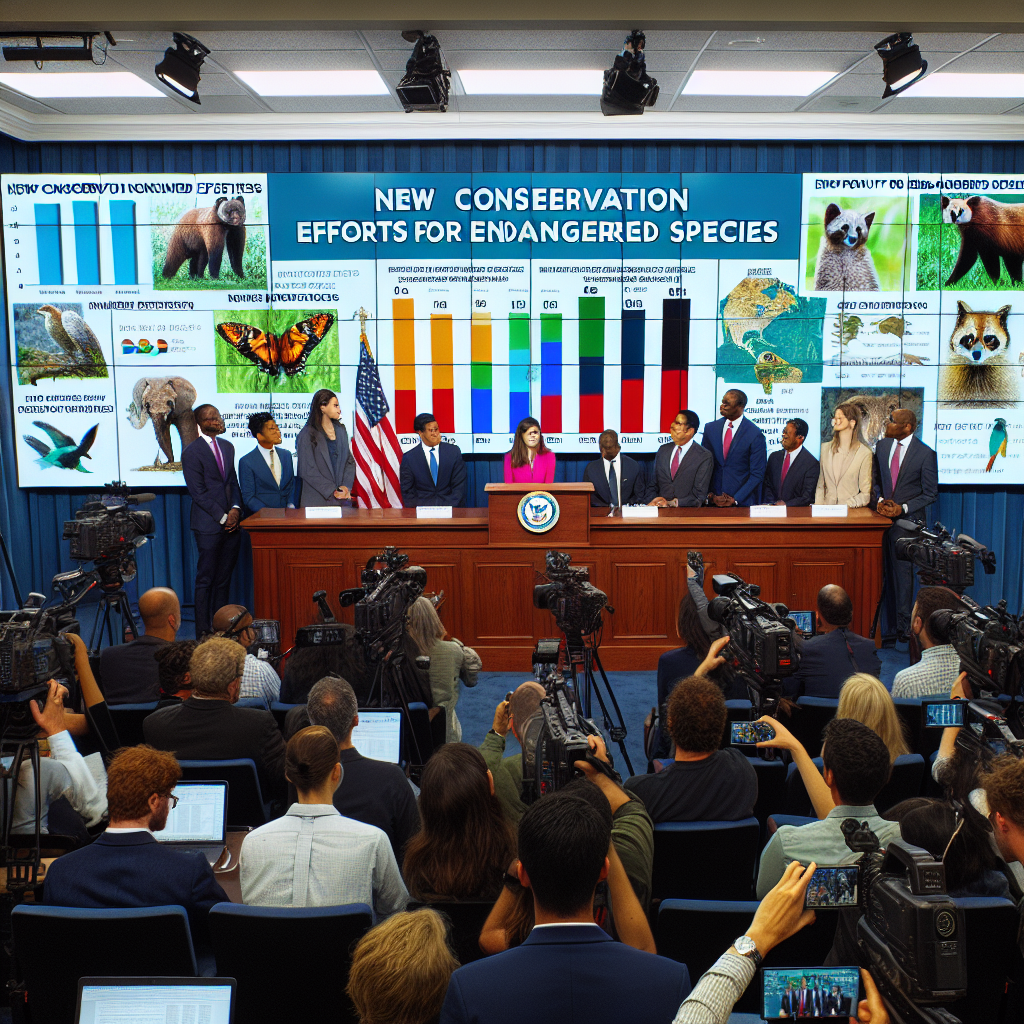Endangered Species: New Conservation Efforts Announced
In an ambitious stride toward preserving global biodiversity, new conservation initiatives have been unveiled to combat the rising threat of extinction facing numerous species. With scientists estimating that one million species are at risk due to human activities and climate change, these fresh efforts aim to bolster the fight against biodiversity loss through innovation, collaboration, and community engagement.
The Urgency of the Extinction Crisis
The planet is currently experiencing its sixth mass extinction event, driven largely by human actions such as habitat destruction, pollution, overexploitation, and climate change. Experts warn that without immediate and effective intervention, many species will disappear, leading to irreversible ecological consequences.
Dr. Maria Sanchez, a leading biologist from the World Wildlife Fund (WWF), stated, “The loss of even a single species can have a ripple effect across ecosystems, impacting everything from food chains to pollination processes. We must act now to protect the web of life on Earth.”
Innovative Conservation Technologies
Among the newly announced efforts are groundbreaking technological advancements designed to enhance conservation capabilities. Drones equipped with high-resolution cameras and infrared sensors will be deployed to monitor wildlife more efficiently and track poaching activities. Coupled with artificial intelligence, these tools can analyze massive amounts of data to identify patterns and predict potential threats to endangered species in real-time.
In addition to aerial surveillance, advances in genetic engineering and reproductive sciences offer promising avenues. Scientists are exploring gene-editing techniques, such as CRISPR, to help bolster populations of critically endangered species. For example, the northern white rhinoceros, with only two females left, could potentially be saved through the development of viable embryos using genetically engineered sperm and eggs.
Global Collaboration and Community Involvement
Recognizing that conservation is a global issue requiring collective action, the new efforts emphasize international cooperation. Governments, NGOs, and private sectors are joining forces to create transboundary protected areas and wildlife corridors. These initiatives aim to ensure species have the space and resources they need to thrive, even as they migrate across political borders.
Furthermore, the new conservation programs highlight the importance of indigenous knowledge and local community involvement. Historically, indigenous peoples have played a crucial role in maintaining biodiversity through sustainable practices. Conservationists are now seeking to integrate traditional ecological knowledge with modern scientific methods to create more effective and culturally sensitive conservation strategies.
Local communities are also being empowered through eco-friendly economic opportunities, such as sustainable tourism and organic agriculture, which provide alternative livelihoods that do not harm the environment. By aligning the interests of local populations with conservation goals, these efforts foster a more sustainable coexistence between humans and wildlife.
Policy and Funding
Conservation organizations are urging governments to enact stronger environmental policies and increase funding for wildlife protection. The establishment of new marine protected areas (MPAs), stricter enforcement of anti-poaching laws, and incentives for sustainable land use are pivotal components of the proposed policy changes.
Additionally, major foundations and corporations are being called upon to invest in conservation projects. Public-private partnerships are seen as crucial in ensuring the financial sustainability of long-term conservation efforts. For instance, the recently launched Global Conservation Fund aims to raise billions of dollars to support wildlife habitats and address key threats to endangered species.
Conclusion: A Hopeful Path Forward
While the challenges are immense, the newly announced conservation efforts represent a beacon of hope for the future of endangered species. By harnessing technological innovations, fostering global collaboration, and empowering local communities, there is a renewed sense of optimism that the tide can be turned in favor of biodiversity conservation.
As Dr. Sanchez poignantly remarked, “The fate of endangered species is intertwined with our own. Their survival is a testament to our ability to coexist with nature. It is our collective responsibility to safeguard their future, and in doing so, we secure our own.”
With the world coming together in unprecedented ways, the hope remains that we can create a thriving planet for all species, both now and for generations to come.


